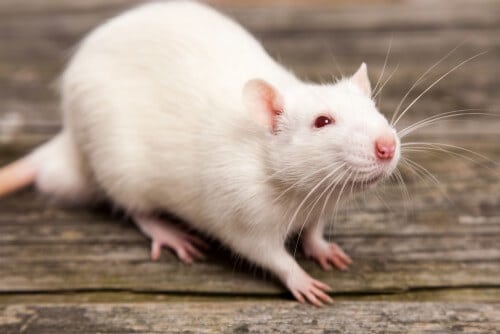In a study recently published in the scientific journal Nature Neuroscience, Weizmann Institute of Science scientists discovered that neural structures, located at the base of rat whisker hairs, perform a complex calculation that plays a central role in the way rats sense the world around them.

In order to receive information about the various objects in the world around us, our sensory organs conduct a dialogue with the brain. In a study recently published in the scientific journal Nature Neuroscience, Weizmann Institute of Science scientists discovered that neural structures, located at the base of rat whisker hairs, perform a complex calculation that plays a central role in the way rats perceive the world around them. These structures, called "mechanical receptors", translate the mechanical changes created by the movement of the hair and its contact with external objects into nerve signals. In the current study, the scientists showed that several receptors from this group calculate, while moving, the relationship between the position of the hair and its future position.
Whisker hairs, just like our eyes and fingers, must move in order to sense the objects around them. For more than a decade, Prof. Ehud Ahisher, from the Department of Neurobiology at the Weizmann Institute of Science, together with Dr. Kenrik Bagdesarian and other members of his group, has been researching this sensing system, using a method that allows scientists to move the whisker hairs of anesthetized rats. The method allows them to study an activity called active sensing, but until now it has not been possible to accurately imitate what happens in awake rats.
In the current study, the scientists combined in their experiments the method developed by Dr. Avner Welch, then a post-doctoral researcher in Prof. Ahisher's laboratory. Back during his PhD studies at the Technion, which were completed under the guidance of Prof. Shimon Marom and Prof. Ron Meir, Dr. Welch began to combine computer systems with biological systems. In the research carried out at the institute, Dr. Welch, Dr. Bagdesarian and Prof. Ahishar used another development, which allowed them to create an integrated system - a kind of hybrid between a rat and a computer - which reproduces in anesthetized animals the whisker movements observed in awake rats moving around freely.
Studies carried out in the last decade have shown that the brain uses the relative coding of the hair position in the rat's mustache to decipher the location of the objects it encounters. Such coding requires the calculation of the future movement of a hypothesis, which is a movement that is not constant. The scientists hypothesized that this complex calculation is performed in one of the brain's circuits, so it is understandable why they were surprised to discover that it is the mechanical receptors in the mustache hair follicles that transmit this information to the brain, along with the other signals that come from the hair.
Prof. Ahishar: "In retrospect, this division of work between the hair follicle and the brain makes sense. The sensory organs are not only 'signal relays'; They form extensive interfaces between the living creature and its environment. When a sense organ develops a new sense ability during evolution, this ability will be better assimilated if the sense organ transmits all the information necessary to process it." In the future, the scientists plan to investigate exactly how the neural structures in the mustache hair follicle calculate the information coming from the hair.
The integrated system developed in this study may, in the future, assist in the study of circuits in the brain that operate in a closed circuit. "Thanks to the study of the interface between the brain and the 'machine', we were able to obtain information on the internal communication between the mustache hairs and the brain," says Dr. Welch. "This 'internal agent' can also be placed in other places in the brain to investigate the complex interrelationships that form the basis of the way we perceive the world."
